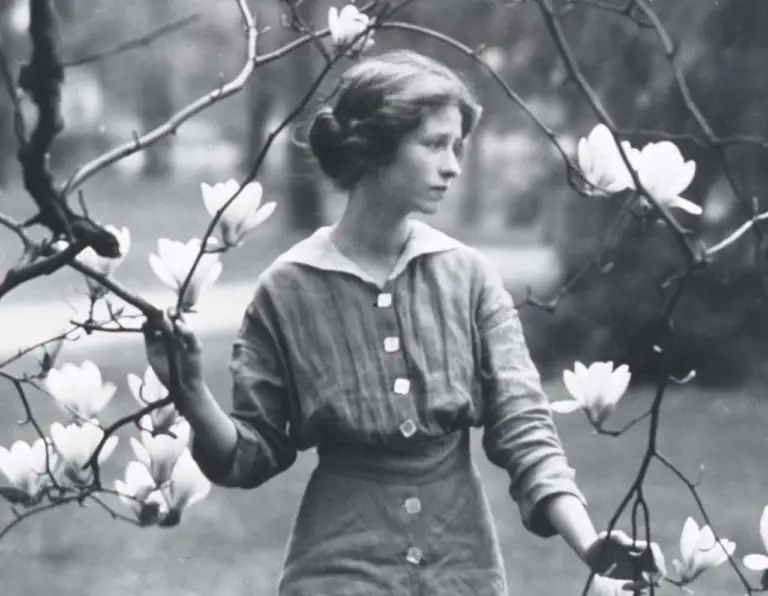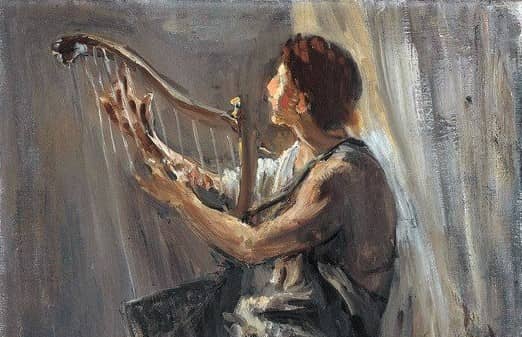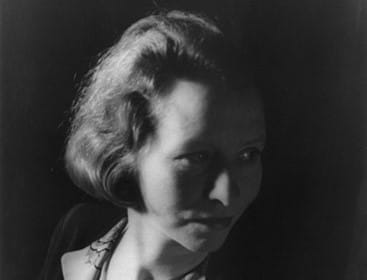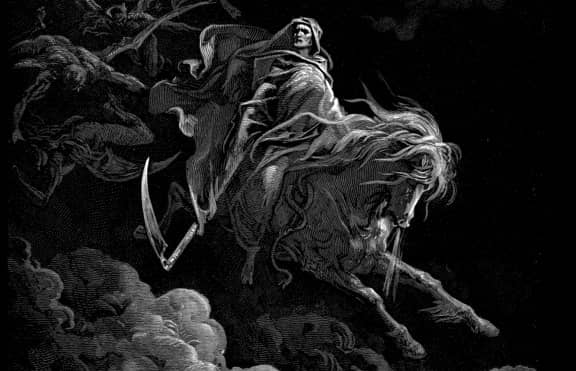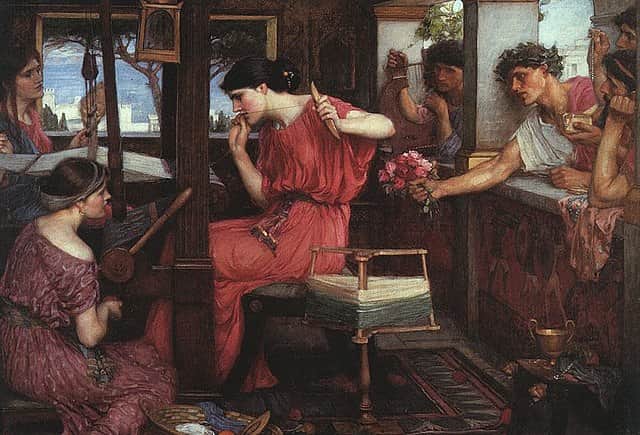Love Is Not All by Edna St. Vincent Millay
“Love Is Not All” is one of the incredible sonnets of Edna St. Vincent Millay, first published in the sonnet sequence, Fatal Interview (1931). This collection features the love affair between Millay and poet George Dillon, whom she first met at a poetry reading at the University of Chicago in 1928. Their relationship flourished in 1929 and gradually deteriorated in 1930. Sonnet 30, “Love is not all: it is not meat nor drink,” captures the finale of the nightly visits of Millay and Dillon. The ensuing sonnets feature the slow decline in their relationship. This sonnet presents Millay’s cynical view on love in the octave and in the sestet, she declares why she abstains from selling love for mental peace.
- Read the full sonnet “Love Is Not All” below:
Sonnet 30: Love Is Not All by Edna St. Vincent Millay Love is not all: it is not meat nor drink Nor slumber nor a roof against the rain; Nor yet a floating spar to men that sink And rise and sink and rise and sink again; Love can not fill the thickened lung with breath, Nor clean the blood, nor set the fractured bone; Yet many a man is making friends with death Even as I speak, for lack of love alone. It well may be that in a difficult hour, Pinned down by pain and moaning for release, Or nagged by want past resolution's power, I might be driven to sell your love for peace, Or trade the memory of this night for food. It well may be. I do not think I would. - from Fatal Interview (1931)
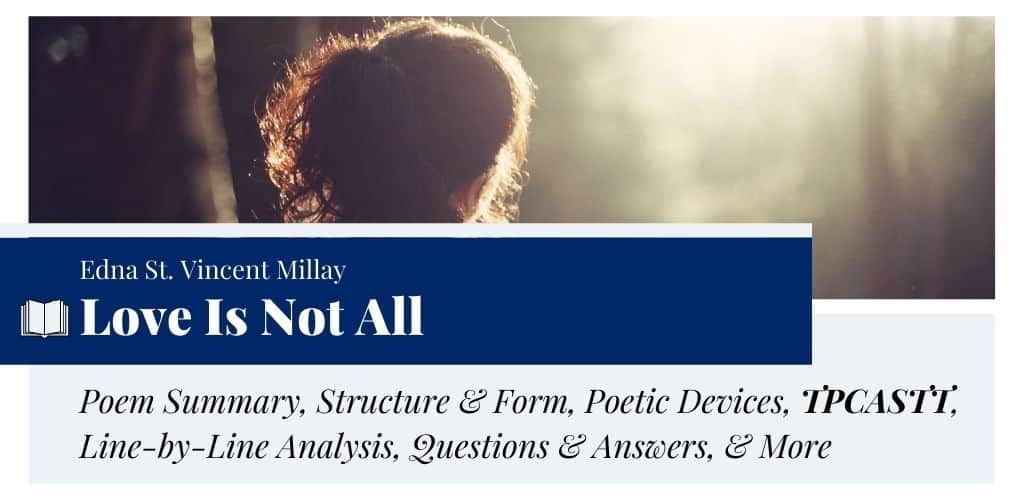
Summary
Millay’s sonnet “Love Is Not All” describes how love fails to provide for the basic necessities of life. The speaker cyclically declares love is neither meat nor drink. It does neither provide solace nor protection against the rain. Millay uses the image of a drowning man desperately clinging on to a spar in order to save his life. She says love is not like that lifesaving pole.
In the second quatrain, the speaker describes how love cannot fill breath into the lungs of that drowning man. It cannot even purify blood nor cure the fractured bone. However, she says, several lovers embrace death for the lack of love alone.
The third quatrain details the speaker’s situation. She speculates a situation where she is pinned down by pain and moaning for relief. She badly needs mental peace that is past her love’s resolution. In that particular situation, it is possible that she would sell love for peace or trade the memory of one night with her lover, for food. Whatever the case may be, she would not trade off love.
Structure, Rhyme Scheme, & Meter
Structure
Millay wrote “Love Is Not All” using a fusion of a Shakespearean sonnet and a Petrarchan sonnet. As per the rhyme scheme, it follows the Shakespearean quatrain-couplet model. Alongside that, if one looks at the pattern and shift in subject matter, it also imitates the Petrarchan octave-sestet model. By using both these sonnet forms, Millay creates an amazing piece that reflects her ability to use conventional male forms in order to create a chiefly feminine outlet of emotions. This piece is written from the point of view of a female speaker, who is none other than the poet herself.
Rhyme Scheme
The rhyme scheme of “Love Is Not All” is ABAB CDCD EFEF GG, following the Shakespearean form; there are three quatrains and a couplet. The rhyming pair of words in the poem include:
- “drink” and “sink”; “rain” and “again”
- “breath” and “death”; “bone” and “alone”
- “hour” and “power”; “release” and “peace”
- “food” and “would”
Millay uses perfect end rhymes in order to create a perfect sonnet, with due emphasis on the sound scheme.
Meter & Scansion
“Love Is Not All” is written in the perfect iambic pentameter with a few metrical variations. Let’s have a look at the scansion of the sonnet in order to understand the intricacies of the sound scheme:
Love is/ not all:/ it is/ not meat/ nor drink
Nor slum/-ber nor/ a roof/ a-gainst/ the rain;
Nor yet/ a float/-ing spar/ to men/ that sink
And rise/ and sink/ and rise/ and sink/ a-gain;
Love can/ not fill/ the thick/-ened lung/ with breath,
Nor clean/ the blood,/ nor set/ the frac/-tured bone;
Yet ma/-ny a man/ is mak/-ing friends/ with death
E-ven/ as I speak,/ for lack/ of love/ a-lone.
It well/ may be/ that in/ a dif/-fi-cult hour,
Pinned down/ by pain/ and moan/-ing for/ re-lease,
Or nagged/ by want/ past re/-so-lu/-tion’s power,
I might/ be driv(e)n/ to sell/ your love/ for peace,
Or trade/ the mem/-(o)ry of/ this night/ for food.
It well/ may be./ I do/ not think/ I would.
The sonnet begins with a trochaic foot marking the depressing mood of the speaker. Millay uses this variation at the beginning of the fifth, eighth, and tenth lines. Besides, she uses comparatively longer anapestic feet in the seventh, eighth, and ninth lines. Overall, the sonnet perfectly follows the iambic pentameter.
Poetic Devices & Figurative Language
Millay makes use of the following poetic devices in “Love Is Not All”:
Alliteration
The repetition of a similar sound at the beginning of nearby words is called alliteration. For instance, there is a recurrence of the “n” sound in the first line, specifically in the negative words “not” and “nor”. It also occurs in the following instances:
- “roof against the rain”
- “many a man is making”
- “lack of love”
- “Pinned down by pain”
- “past resolution’s power”
- “for food”
Metaphor
- In the first line, Millay metaphorically compares love to the basic necessities of life, such as food and drink. She actually contrasts love with human needs through these comparisons.
- Through the phrase, “Pinned down by pain,” “pain” is compared to a metal pin.
- In lines 12-13, Millay compares love and memory to tradable objects that her speaker would sell for peace and food.
- She uses an extended metaphor in the line, “Or trade the memory of this night for food.”
Juxtaposition
Throughout the sonnet “Love Is Not All,” Millay uses juxtaposition to contrast love with human needs. For instance, in the first lines, she contrasts love with meat and drink, and rest and roof. Besides, the octave and sestet are juxtaposed. In the octave, the speaker presents her cynical view of love. While, in the sestet, she disregards all the drawbacks of love and implies she would not trade off love for peace or physical wants.
Symbolism
In this poem, Millay uses a number of symbols. For instance, in the first line, “meat” and “drink” symbolize the bare necessities of life, chiefly related to physical requirements. In the second line, “slumber” symbolizes mental peace and rest and “roof” symbolizes protection and safety.
Imagery
In lines 3-4, Millay uses a kinesthetic image of drowning men clinging on to a wooden pole:
Nor yet a floating spar to men that sink
And rise and sink and rise and sink again;
Through these lines, she depicts the simultaneous rising and sinking of a drowning person. This image actually showcases the emotional suffering of a person for the lack of love. In the following lines, there are a number of bodily images dealing with lung, blood, and bone.
Repetition
Millay uses the repetition of negative terms such as “not” and “nor” deliberately to portray her cynicism concerning love. Alongside, there is a repetition of the phrase, “It well may be” at the beginning and end of the sestet. The recurrence of this phrase hints at the speaker’s fragile state of mind.
Theme
The most important theme of Millay’s “Love Is Not All” is love’s powerlessness. It also explores the themes of the value of love, basic necessities, want vs. need, and resolution. This sonnet is about a speaker, who at first seems to be cynical about love. She believes love is not all and can be replaced for food, drink, or other survival needs. The same person takes a different stance on her personal affairs. If a situation occurs where she badly needs mental peace, she will not sell her love or forget the memories with her lover. In this way, Millay presents her resolution with particular emphasis on the futility of love.
Line-by-Line Analysis & Explanation
Lines 1-4
Love is not all: it is not meat nor drink
Nor slumber nor a roof against the rain;
Nor yet a floating spar to men that sink
And rise and sink and rise and sink again;
In the first quatrain of “Love Is Not All,” Millay presents a number of ideas irreplaceable by love. First and foremost, her poetic persona disconcertingly declares love is not everything. Then she continues to name the things that cannot be devalued for love. Two such things are meat or food and drink. Humans cannot replace the basic necessities with love only. Love can be the greatest virtue of all. In the case of one’s basic needs, they have to think selfishly.
In the following lines, the speaker says love is not “slumber” nor a “roof” against the rain. The term “slumber” represents physical and mental rest. The next term “roof” stands for protection, comfort, and safety. Love cannot provide both of these.
Moreover, it is not a “floating spar,” symbolizing the last straw to hold onto. Drowning men can cling to the spar and somehow survive. But, love cannot help them in that dire situation. Through the image of drowning men and their gradual rising and sinking in the water, the speaker portrays her desperation. She would find herself in a similar situation for the lack of love.
Lines 5-8
Love can not fill the thickened lung with breath,
Nor clean the blood, nor set the fractured bone;
Yet many a man is making friends with death
Even as I speak, for lack of love alone.
In the second quatrain, the speaker presents some clinically critical situations where love does not play a role. For instance, love cannot fill the thickened lung of a drowned man with breath. Nor can it cleanse the blood or fix the broken bone. However, several men make friends with death, as when the speaker recites these lines, for the lack of love alone.
It is important to note how the poet portrays committing suicide in a friendlier light. Her speaker says that broken lovers make friends with death instead of saying they die for love. These lines also hint at the poet’s mental state when her relationship with George Dillon abruptly ended. She felt like dying for the lack of his love.
Lines 9-12
It well may be that in a difficult hour,
Pinned down by pain and moaning for release,
Or nagged by want past resolution’s power,
I might be driven to sell your love for peace,
There is a shift at the beginning of this quatrain (or sestet). The use of the words, “It well may be,” hint at the fact that the speaker refutes all that she has said. There may come a difficult hour when she feels pinned down pain and desperately moaning for release. In that particular situation, she may be nagged by want that is past her resolution’s power. Then, she might be forced to sell his love for mental peace.
Lines 13-14
Or trade the memory of this night for food.
It well may be. I do not think I would.
In the final couplet, the speaker presents her resolution. She compares the memory of the night to an object that she would trade-off for food. The “memory of this night” is a hint at the last nightly visit of Dillon to Millay’s Steepletop house. This line has a deeper connotation than its literal meaning.
How can one trade one night’s memory for food? It is actually a reference to the fact that Millay would never “sell” the “memory” for something mundane. Even though she was in dire need of food or money, she would not sell that memory presented in her sonnets. It means she wrote these sonnets, not for money or popularity. The entire collection Fatal Interview was dedicated to her love, George Dillon, and the memories they made together.
The last line strengthens her resolution. She says, “I do not think I would.” It means she is confident about her resolution. She would not sell or trade his memory for anything as cheap as food or peace. In this way, she chooses suffering over mental peace. Peace makes one forget about one’s past love. In contrast, suffering or pain would remind her of the person she loved.
TPCASTT of “Love Is Not All”
Explore the TPCASTT of Millay’s sonnet below. If you want to know more about this method, don’t forget to check out our TPCASTT poetry analysis guide.
| T | Title | Millay did not give a title to the sonnet. She just numbered it as Sonnet 30. In Fatal Interview, the first line of the sonnet is taken as its title. The shortened title “Love Is Not All,” or “Love is not all: it is not meat nor drink,” hints at the fact that love is not everything. It is neither food nor drinks needed for survival. It seems that the poet is going to present her cynical view on love after undergoing heartbreak. |
| P | Paraphrase | Love is not all: it is not meat nor drink, nor sleep nor a roof against the rain. It is not a floating spar to drowning men that sink and rise and finally sink again. Love cannot fill the thickened lung with breath, clean the blood, or fix the broken bone. Yet many men make friends with death, even as I speak, for lack of love only. It well may be that in a difficult hour, pinned down in pain and moaning for release, or for my wants past resolution’s power, I might be forced to sell your love for peace. Or trade the memory of this night for food. It well may be. I don’t think I would do that. |
| C | Connotation | This sonnet contains a regular rhyming pattern (ABAB CDCD EFEF GG) and metrical scheme (iambic pentameter). The content is grouped into an octave and a sestet. In this sonnet, the speaker lists a number of situations where love is powerless. Paradoxically, if she finds herself in similar situations, she would not sell or trade love for relief. Rather, she would choose suffering or dying over trading off the memory of her lover or love. |
| A | Attitude | The attitude or tone of the speaker is cynical and practical in the first six lines. Her tone sounds a bit ironic in lines 7-8. In the sestet, the speaker’s tone is confident and calm. |
| S | Shifts | There are three shifts in the poem that occur in lines 7-8, line 9, and line 14. There is a change in metrical pattern and a slight tweak in the speaker’s tone in the last two lines of the octave. In these lines, she notes how men choose death for the lack of love even though “love is not all.” This marks the first shift. Then the use of the phrase “It well may be,” at the beginning of lines 9 and 14 marks the other shifts. |
| T | Title | After reading this poem, it becomes clear that the title of the poem gives a rough hint at the subject matter but not the overall idea of the poem. This sonnet is about love’s value for one speaker. She glorifies the love for her beloved and presents her resolution of not doing anything that denigrates her emotion. |
| T | Theme | The main theme of “Love Is Not All” is love’s powerlessness and one lover’s resolution. This sonnet lists the things love is powerless against. If the speaker finds herself in a similar situation, she will not trade off her love. She may suffer yet her conviction is that she would not trade the memories. |
Historical Context
Edna St. Vincent Millay was happily married to Eugen Jan Boissevain, who took care of her health and supported her career. They settled in a generous farmhouse at Steepletop, New York in 1925. In 1928, when Millay was at a poetry reading at the University of Chicago, she met George Dillon, 14 years junior to her. They developed a romantic relationship in the following years. By early 1930, Dillon stopped replying back to Millay’s letters. Thus, the relationship officially came to an end but continued sporadically.
During that time, heartbroken Millay heavily drank to ease her pain and wrote the collection of sonnets, Fatal Interview, in memory of her love for Dillon. The collection was published in 1931 at the height of the Great Depression. Within weeks several copies of the collection were sold even during a time of serious economic depression. Millay modeled the sonnets after the Shakespearean sonnet sequence. The title of the collection is an allusion to John Donne’s “Elegy XVI: On His Mistress” and the Sonnet 30: “Love Is Not All” is a direct response to the elegy. This sonnet marks the end of Dillon’s nightly visits to Millay’s Steepletop house.
In Many Lives: One Love, Fanny Butcher notes that after Dillon’s death, a copy of Millay’s collection was found in his library. It contained Millay’s personal note to him: “These are all for you, my darling.” Dillon also wrote a collection chronicling their relationship, entitled The Flowering Stone in the same year Millay’s collection was published.
Questions and Answers
“Love Is Not All” is one of the finest poems of Edna St. Vincent Millay. This sonnet is about love’s futility in some specific circumstances, such as in dire needs or in the case of fulfilling one’s basic necessities. Love seems powerless on several occasions, yet the poet does not wish to exchange love for mental peace or her basic needs. This sonnet alludes to the memory of the last night George Dillon and Millay spent together.
The best sonnet of the collection Fatal Interview (1931) by Edna St. Vincent Millay, “Love Is Not All,” throws light on the powerlessness of love in matters of healing and basic needs. The speaker of this sonnet details the things love cannot do in the octave. In the sestet, with due regard to her arguments, she paradoxically says, she would not sell or trade her love even if it would make her life easier.
Sonnet 55 by William Shakespeare, “Not marble nor the gilded monuments,” is about the ravages of time and immortalization of love. In this sonnet, Shakespeare claims that his poem will outlast monuments and will find praise until the Last Judgement. Through this sonnet, his lover would live eternally. Millay presents a slightly different idea in her sonnet “Love Is Not All.” She rejects the flowery notions encircling the conventional definition of love with practical arguments. Yet, she fails to keep her rationale as she does not devalue love in need of mental peace and physical satisfaction.
There is an echo to Shakespeare’s idea of poetry as a manifestation of his love and memories, in the last lines of Millay’s sonnet. She describes how she would not sell her memory or the poem for food or money. In this way, she indirectly glorifies love as Shakespeare did in Sonnet 55.
Millay’s “Love Is Not All” is a Shakespearean sonnet that follows the Petrarchan model as well. This sonnet details the poet’s cynical views on love and her resolution not to fall prey to her own rationale and practicality. It is written from the perspective of a woman speaker using the first-person pronoun “I”.
The sonnet “Love Is Not All” explores the themes of the futility of love, want versus need, a lover’s resolution, and suffering. Millay describes the love’s powerlessness in the octave. While, in the sestet, she takes an opposite stance. Instead of rejecting love for mental peace, she accepts suffering and death.
The main idea of the poem revolves around the contrast between want and need. In some situations, people need to act for fulfilling their needs instead of clinging to their wants. One cannot value love (want) over their basic need. However, the speaker chooses love as it is her basic need. Even if rejecting love would bring her mental peace, she would keep loving her beloved.
The tone of the octave is cynical, practical, and ironical. Whereas, the sestet contains an emotional and confident tone.
In “Love Is Not All,” Millay uses extended metaphor in order to compare love with the basic necessities of life. The first six lines list the things love is futile against, such as food, drink, rest, safety, and a lifesaving spar.
This sonnet consists of an octave and a sestet like Petrarchan sonnets. The first eight lines present an argument in which love is shown in a negative light. In the last six lines, the speaker rejects her rationale in the previous lines and values love over her basic necessities. If readers group the lines according to the rhyme scheme, the poem also follows the Shakespearean model.
The rhyme scheme of “Love Is Not All” is ABAB CDCD EFEF GG, imitating the Shakespearean or Elizabethan sonnet form. There are three quatrains containing alternative rhyming lines. The poem ends with a rhyming couplet.
In this sonnet, Millay uses irony throughout the octave. She understates love and contrasts it against basic needs. In the last two lines of this section, she ironically says, even though love is not as valuable as it seems to be, people are still dying for love. In this way, Millay’s use of irony highlights her actual stance on love.
In lines 1-8, the speaker paradoxically points out the situations when love proves to be futile. She lists the situations according to their ascending order of importance. Then she implicitly rejects the practical way forward for emotional reasons.
Similar Poems about Love
- “Love in a Life” by Robert Browning — This poem is about a heartbroken speaker, who roams in his house recollecting the traces of his absent lover.
- “My True Love Hath My Heart” by Sir Philip Sidney — This sonnet is about the exchange of truthful emotions between lovers.
- “Time does not bring relief; you all have lied” by Edna St. Vincent Millay — In this sonnet, Millay explores how a speaker is constantly reminded of her loved one.
- “I cannot live with You” by Emily Dickinson — In this poem, the speaker points out a number of reasons for her inability to live with her lover.
Useful Resources
- Check out What Lips My Lips Have Kissed: The Loves and Love Poems of Edna St. Vincent Millay — Explore how the noted biographer and poet Daniel Mark Epstein illuminates the life of one of the greatest American writers of love poetry, Edna St. Vincent Millay. He uses Millay’s letters, diaries, journals, and that of her lovers to tell the astonishing story of her life.
- About Edna St. Vincent Millay — Read about Millay’s life and her important works.
- About George H. Dillon — Learn about the muse of Millay, who chronicled their love in the collection The Flowering Stone (1931).
- Poet Profile of Millay — Explore more about the poet and her works.

